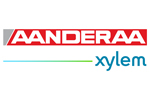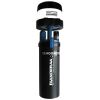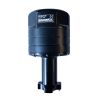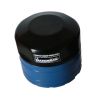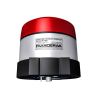Aanderaa RCM Blue Recording Current Meters
Features
- Bluetooth for communications and data retrieval
- Built-in solid state 3-axis tilt-compensated compass
- Battery compartments with up to 70Ah
- Expedited repair and warranty service
- Lifetime technical support
- More
Overview
The Aanderaa RCM Blue is a self-recording Current Meter which also measures water temperature as standard and pressure as optional. The Doppler Current Sensor is an upgraded version of the proven SeaGuard ZPulse sensor. The instrument configuration and data retrieval is done via Bluetooth, which eliminates the need to open the pressure case for repeated deployments. The DCS sensors are based on the backscatter acoustic Doppler principle.
Mechanics
The DCS measures in both directions on each axis and is insensitive to disturbance from vortex speeds around the sensor itself and the mooring line when the forward ping feature is enabled. The Aanderaa RCM Blue's multi-frequency technique reduces the required number of pings needed in order to achieve an acceptable statistical error. The achieved measurement precision is proportional to the inverse of the square root of the number of ping measurements in a measurement interval.
- RCM Blue Recording Current Meter
- 1 battery package, alkaline
- 1 empty battery shell (for e.g. lithium batteries)
- 2 magnetic tip pens to activate Bluetooth (one located inside the battery container)
- USB to Bluetooth adapter
- Configuration software, AADI Real-Time Collector
- Data visualization and analysis Software, Aanderaa Data Studio.
- Documentation CD including operating manuals and SW installation files
In The News
Source Water Monitoring in Albany, New York: Tracing Water Quality throughout Tributaries
Thousands of US cities pull their drinking water from natural source waters like reservoirs, rivers, and streams, making overall watershed health a key consideration for water providers. In Albany, New York, the Albany Department of Water and Water Supply delivers drinking water to over 100,000 residents as well as monitors and manages the larger drinking water supply watershed. Hannah Doherty, Environmental Specialist at the Albany Department of Water and Water Supply , spends her days working with a small team to monitor the drinking supply and the connected water bodies. Doherty explains, “We’re the first to encounter the water that ends up being the drinking water.
Read MoreWildfire Prevention in the Sierra Nevada Region with the Yuba Watershed Institute
Though recent wildfires have sparked new conversations about wildfire management and response, groups like the Yuba Watershed Institute have been monitoring the forests and water resources of the Sierra Nevada region for decades, managing approximately 5,000 acres of land with the Bureau of Land Management (BLM) and about 7,000 acres in private land partnerships. The goal of the Institute is to work with local communities and land agencies to improve watershed and forestry management through informed practices and public outreach. The goals of the Yuba Watershed Institute are three-fold: Improve the ability of fire suppression agencies like the California Department of Forestry and Fire Protection ( CAL FIRE ) and the US Forest Service.
Read MoreWave Sensors Integration with NexSens Buoys: A Cutting-Edge Solution for Wave Measurment
Real-time wave data supports accurate weather prediction, safe and efficient maritime operations, and provides valuable safety and operating condition information for recreation and commercial fishing. Understanding wave dynamics also helps with the design of protective coastal structures like seawalls, breakwaters, and jetties. It also supports better prediction of their impact on sediment transport and coastal geomorphology. Wave data is a key factor in qualifying and designing offshore wind farms and harnessing kinetic energy for electrical generation. It helps with the understanding of ocean-atmosphere interactions and contributes to studies of sea-level rise and climate change impacts.
Read More












